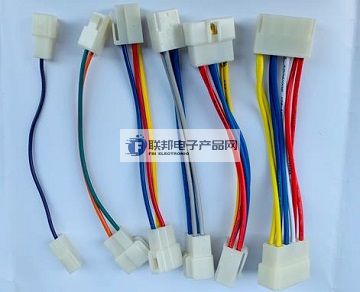Categorization:Product Information
Wire harness terminal standards refer to the specifications and standardized requirements that are followed during the manufacturing and connection of wire harnesses. Different regions and industries may have different standards for wire harness terminals, and some of the common ones include: IPC/WHMA-A-620: This is a standard for wiring harnesses and electrical assemblies published by the International Electronics Industry Confederation (IPC) and the Wire Harness Manufacturers Association (WHMA). It specifies the quality requirements, process specifications and acceptance criteria for the manufacture of wiring harnesses. UL 486A/B: This is the U.S. Safety Laboratory (UL) issued by the wiring harness and connector standards. It includes the material requirements of the harness terminals, electrical performance requirements and use restrictions, etc. JASO D611: This is the Japan Automotive Standards Organization (JASO) issued by the automotive wiring harness standard. It specifies the dimensions, connection methods and electrical performance requirements for automotive wiring harness terminals to ensure the reliability and compatibility of automotive wiring harnesses. The features and characteristics of wiring harness terminals mainly include the following aspects: Reliability: wiring harness terminals need to have a stable electrical connection, able to withstand vibration, temperature changes and other environmental factors, to ensure the reliable transmission of signals and power. Adaptability: Harness terminals need to adapt to different harnesses and connector types to ensure interconnectivity and compatibility, so that different components and equipment can be effectively connected and communicate. Durability: Harness terminals need to withstand long-term use and frequent insertion and removal of the test, with abrasion resistance, corrosion resistance and high temperature resistance to extend the life of the harness and reliability. Safety: Harness terminals need to comply with safety standards, to avoid short circuits, electric shock and other safety hazards, to protect the user and the safety of equipment. Operability: Harness terminals should be designed to be user-friendly for connection and removal operations to facilitate installation, maintenance and replacement. Standardization: the size, interface and performance of the harness terminals should be in line with the appropriate standards to ensure the interchangeability and versatility of the harness for ease of manufacture and maintenance. The features and characteristics of wire harness terminals cover reliability, adaptability, durability, safety, operability and standardization to meet the needs of wire harness connection and ensure the performance and reliability of the electrical system.

On the federal electronic products network platform related to the introduction and sales of products briefly: federal electronic products network - a professional agent / production / sales of a variety of [connectors | wiring harness | wire and cable products]; if you have a related [connectors | wiring harness | wire and cable products] purchasing / sourcing needs or would like to buy / to understand which connectors | wiring harness | wire and cable products we can provide solutions, please contact our business staff below; if you have a related [connectors | wiring harness | wire and cable products] sales / resources and promotion needs, please click on the ¡°business cooperation ¡± to discuss with a person! If you have related [connectors | harness | wire and cable products] sales / resources and promotion needs, please click on the ¡¡ Business Cooperation ← ¡" to discuss with a person!